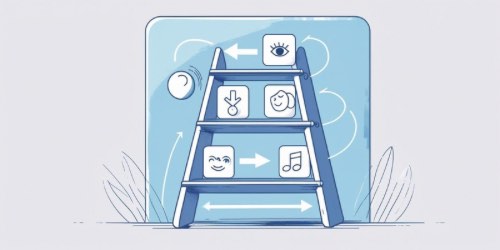I’m an adult learning animation right now. I may be new to timing charts and keyframes, but I’m not new to storytelling—years of real life have given me characters, moments, and emotions to draw from, and that experience becomes an edge once I practice with intention.

The Adult Advantage
Starting later isn’t a penalty; it’s perspective. Adults arrive with discipline from work, patience from life, and a clearer sense of the stories they want to tell. Animation isn’t only about drawing perfectly—it’s about making an audience feel something, and your lived experience is already a library of emotion.
Common Fears (and how to neutralize them)
- “I don’t have time.” Trade intensity for consistency: 20 minutes a day beats a 4-hour sprint you never start.
- “I’m not talented.” Talent sets speed; habit sets distance. Distance wins.
- “I’m too far behind.” Someone younger may move faster, but they don’t have your voice. Voice is what sticks.
Fears rarely disappear completely; they shrink when you give them a job—protecting your next small session on the calendar.
A Simple Practice Loop (built for busy adults)
- Pick one tool and stop app-hopping so you master a single workflow.
- Set a tiny daily scene: bouncing ball, blink, head turn, then a 3-second beat.
- Post a weekly micro-win privately or publicly to make progress visible.
Think of it like strength training—low weight, high frequency, steady form; momentum grows because the start cost is small.
Use Your Story Voice
Animate what you’ve lived: the breath before a hard truth, the glance that dodges a question, the hesitation before a leap. Simple moves feel powerful when they’re honest, and honesty is your superpower.

Four-Week Starter Plan
- Week 1: Spacing, squash and stretch on a bouncing ball—heavy, medium, light.
- Week 2: Eye blinks and head turns timed to natural breath.
- Week 3: Anticipation and follow-through on a reach, pick-up, or sit-to-stand.
- Week 4: A 3–4 second emotional beat anchored by a meaningful pause.
You’re not chasing volume; you’re building clarity, and clarity makes later complexity manageable.
Momentum Systems (you’ll actually keep)
- Calendar glue: book a daily 20-minute “12 frames today” appointment.
- Friction removal: keep a file called “Next Shot” pre-blocked so you never start cold.
- Feedback lane: ask one precise question—“Does the anticipation read?”—to keep critique useful.
Tiny frictions kill adult practice; fewer decisions and faster starts keep you moving even on low-energy days.
Looking for tools that can make your animation learning smoother? Check this out…
Final Thoughts
It is never too late to begin. Pair your life experience with small, consistent reps, and your scenes will feel grounded and human—the part audiences remember long after the credits roll.




























